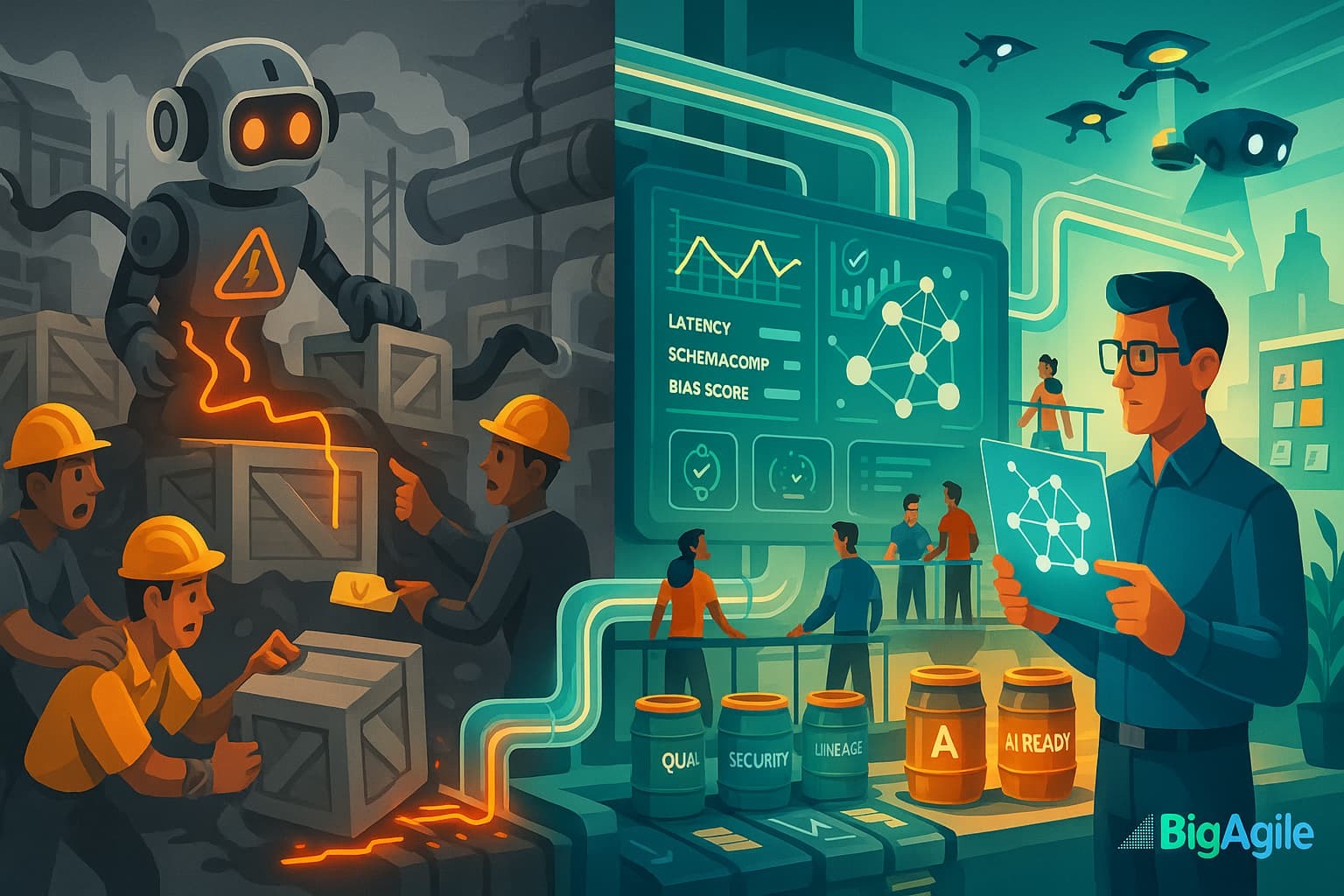
Did You Know?
The “data architect” role has rocketed 35% on LinkedIn since 2022 and now commands U.S. salaries that exceed $200k plus bonuses. These architects design the blueprints utilized by every AI, analytics, or Gen-AI initiative. Without that blueprint, 63% of AI pilots stall in “proof-of-concept purgatory,” as MIT researchers call it.
Lean-flow teacher, Don Reinertsen, reminds us that value creation collapses when upstream inputs are "poor—small" batches of high-quality material keep the entire system humming. In digital terms, those inputs are your data models, governance rules, and pipelines, controlled by the data architect.
So What?
When leaders chase AI like “digital gold,” they often forget that gold ore arrives dirty. Usually, one of the first change failures is not creating urgency. This happens when executives green-light big-bang AI without elevating data architecture to the C-suite agenda.
The result?
- Data engineers burn sprint cycles reconciling schemas.
- Data scientists fabricate “shadow pipelines.”
- Product teams wait as WIP balloons and Cost of Delay silently tax ROI.
Worse, the organization’s collective intelligence, the “supermind” Malone describes, stagnates. We lose momentum, and finally we lose good people. Our data folks need to be seen as first-class citizens in our development efforts (like Michelin Star chefs in a restaurant). Michelin Star chefs won't work in a kitchen with subpar equipment or unclean facilities; neither will great developers.
In short: No architect, no "oil" refinery, just sludge.
Now What?
- Adopt a change leadership framework (ADKAR, Kotter, etc.) for data culture change.
Awareness workshops on data debt → Desire via publishing the $ impact of insufficient data → Knowledge paths (SQL, DBT, lineage tools) → Ability through embedded data guilds → Reinforcement with dashboarded quality KPIs. - Embed a Flow-Based Kanban style architecture.
Limit WIP of schema changes; use queue visualization to keep latency under Reinertsen’s critical threshold. - Institutionalize dual-track leadership.
Pair a data architect (strategy) with data engineering leads (execution), just as the article distinguishes. This echoes Kotter’s “guiding coalition.” - Govern for AI readiness.
Align glossary, lineage, and privacy boundaries (DAMA, TOGAF, plus cloud certs), then feed that curated corpus to ML architects for feature stores. - Measure what matters.
Borrow data-mining quality metrics, completeness, consistency, mutual information, to set SLOs for each dataset before any model training occurs.
Catalyst Leadership Questions
| Question | Probing Prompt |
|---|---|
| How urgent is our data debt? | If we doubled volume tomorrow, where would pipelines break first? |
| Who owns the enterprise data blueprint today? | Can any VP draw and defend it on one page? |
| Are data-quality KPIs tied to OKRs and bonuses? | Which role is rewarded when duplicate records drop 50 %? |
| Do we treat data lineage as product lifecycle? | What is the mean time between lineage updates? |
| How will our AI ethics board validate training data? | What bias tests run before model deployment? |
Data is no longer “the new oil”, it’s the oxygen of AI. A seasoned data architect is your refinery chief and atmospheric chemist, ensuring every model inhales pure, rich context. Ignore the role, and your Gen-AI dreams could end like a combustion engine starved of air, lots of noise, no momentum.
Let’s architect for flow, fuel, and future-proof value!